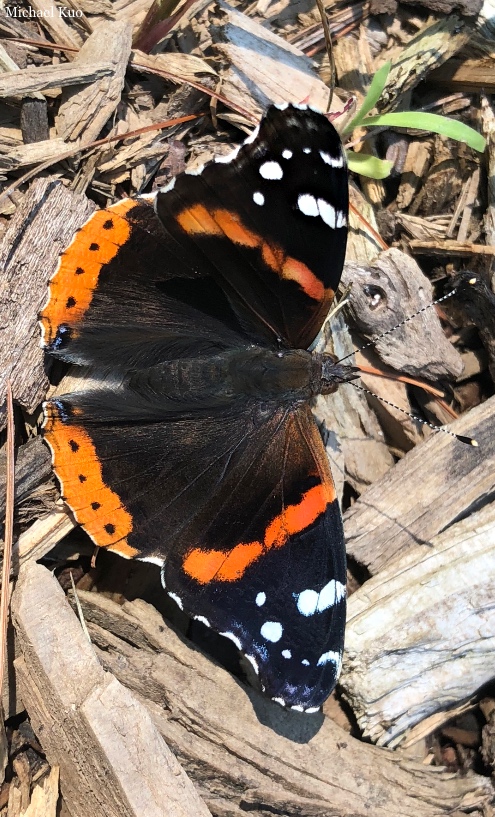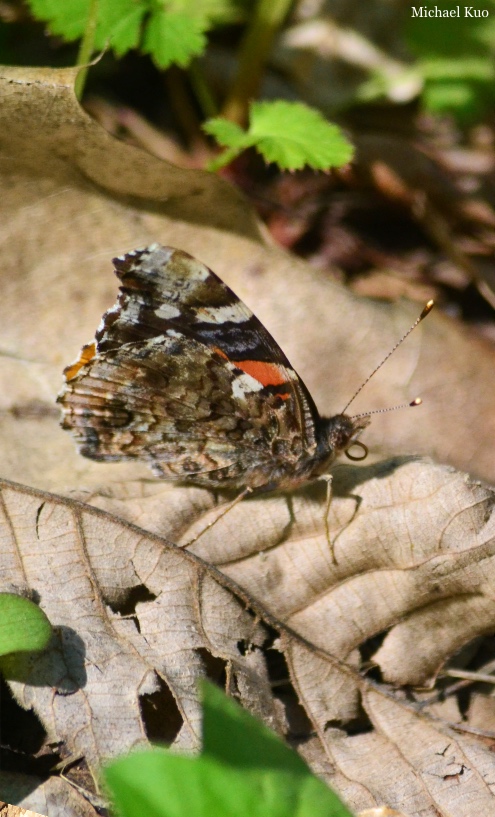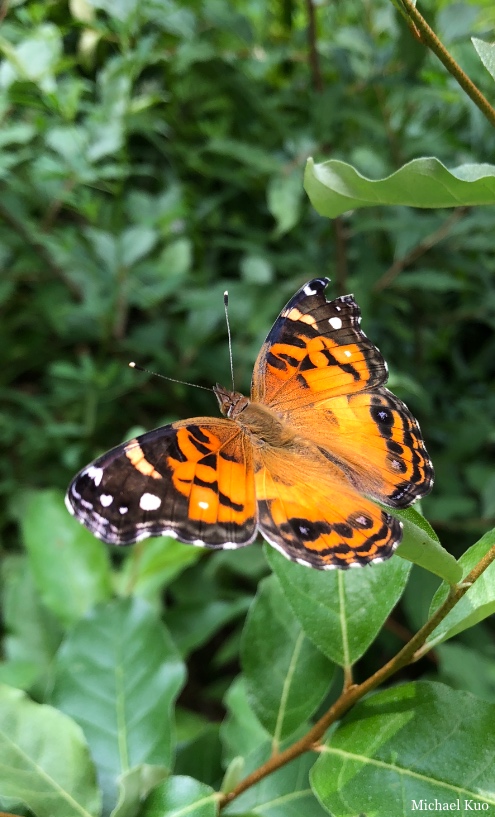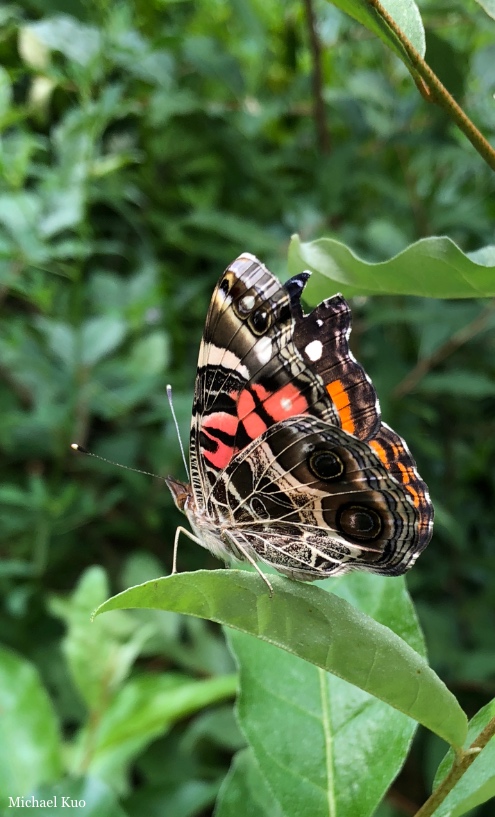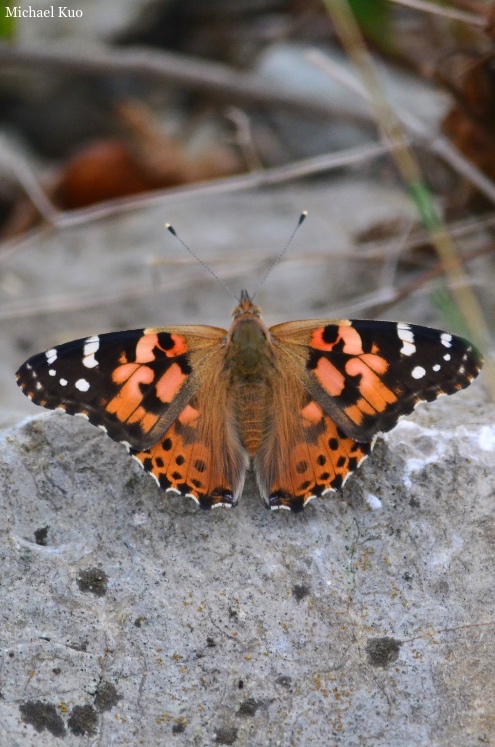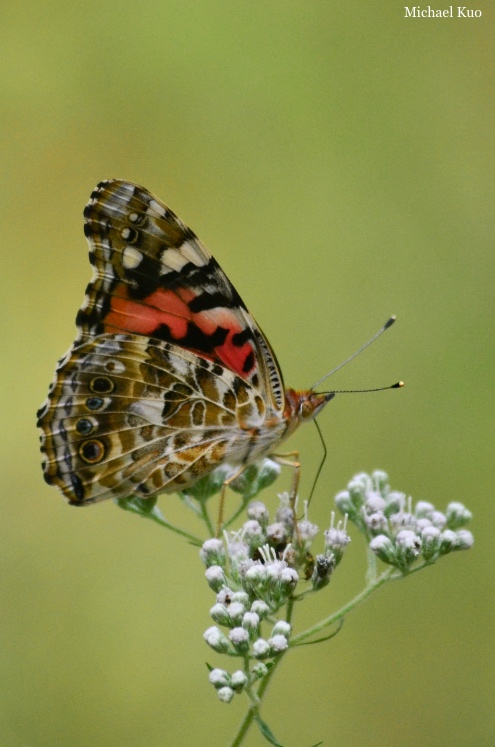 Three Midwestern Vanessas |
|
Three butterfly species in the genus Vanessa are often seen in the Midwest, and can be difficult to separate. Vanessa atalanta, Vanessa cardui, and Vanessa virginiensis are commonly known as red admirals, painted ladies, and American ladies, respectively. Below we have provided illustrations of each of these butterflies, along with comments on how to identify them. A fourth North American Vanessa species, Vanessa annabella, is found in western North America. Who comes up with the "common names" for butterflies? Why are two of these species "ladies," and one an "admiral?" Nowadays it is perfectly likely that an admiral might be a woman, but one wonders whether the red admiral's name is a remnant of outdated gender-based stereotyping (and, if so, what it is about the red admiral's colors that seem "male") . . . or is it just that the red bands on the red admiral's wings are reminiscent of flashy epaulettes? And do admirals even wear epaulettes? (Based on Googling images, navy admirals appear to wear epaulettes only with their white uniforms, and the epaulettes are gold.) And what on earth makes the "ladies" below "lady-like?" |
 midwestern range for all three butterflies |
|
|
|
|
|
|
|
|
|
|
References: Bland & Jaques 1978, Milne & Milne 1980, Scott 1986, Arnett 2000, Lotts & Naberhaus 2022. Kuo, Michael & Melissa Kuo (May, 2022). Three Midwestern Vanessas. Retrieved from the midwestnaturalist.com website: www.midwestnaturalist.com/vanessa_spp.html All text and images © , midwestnaturalist.com. |
